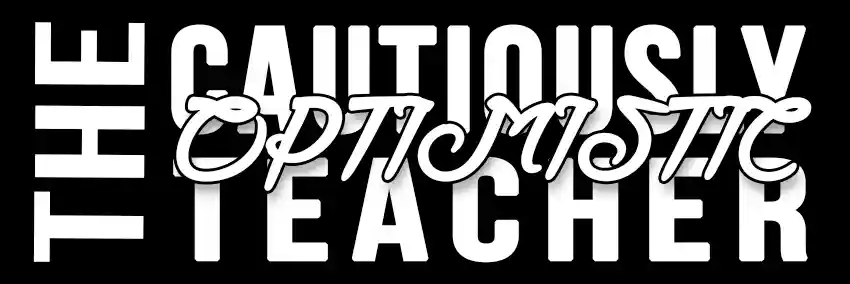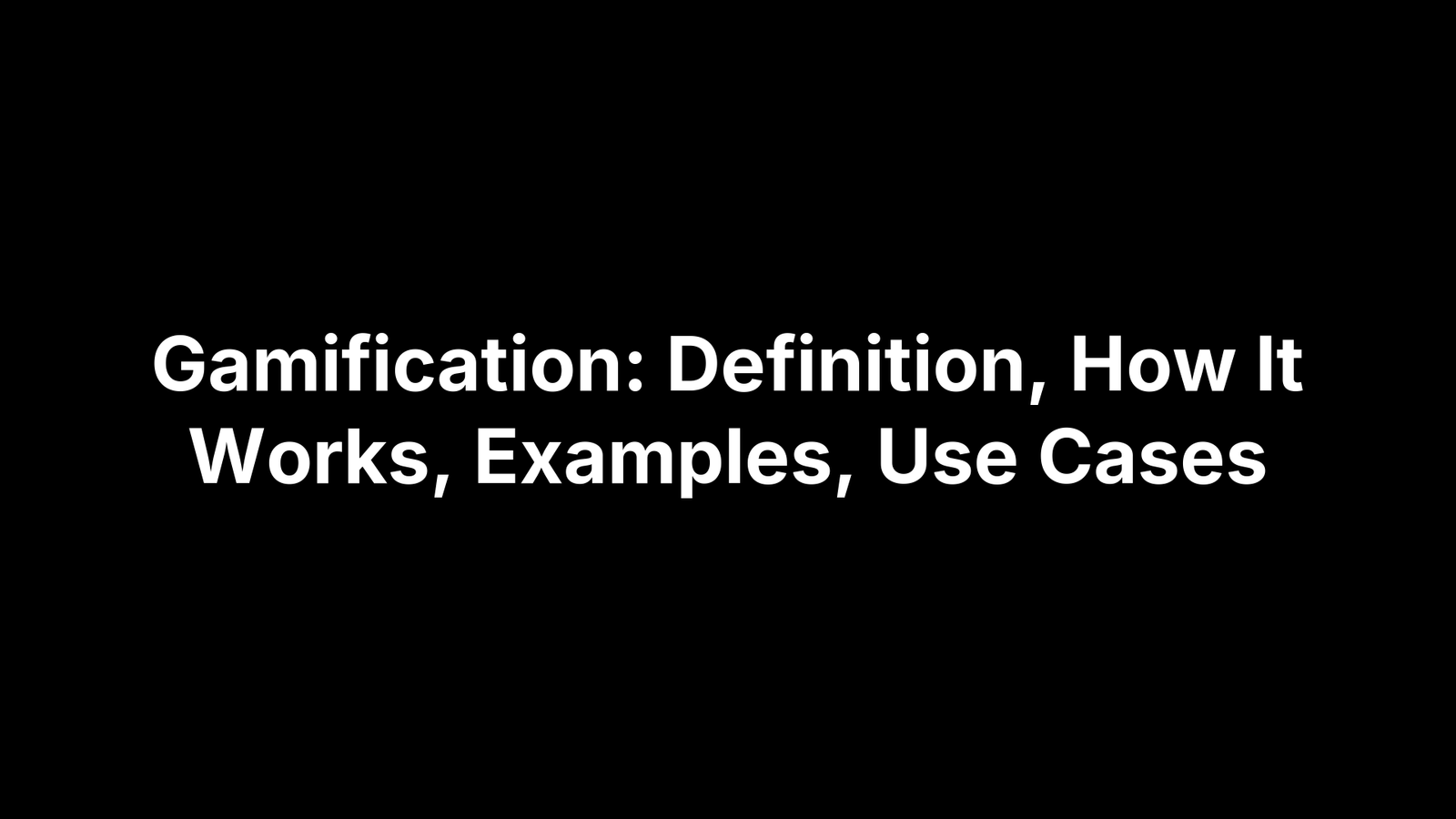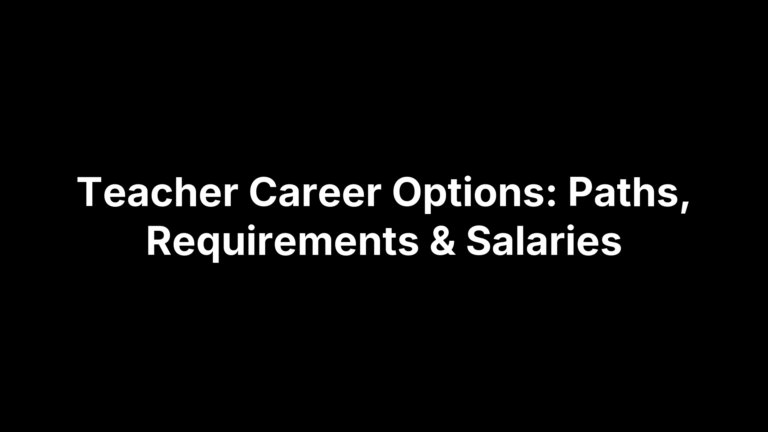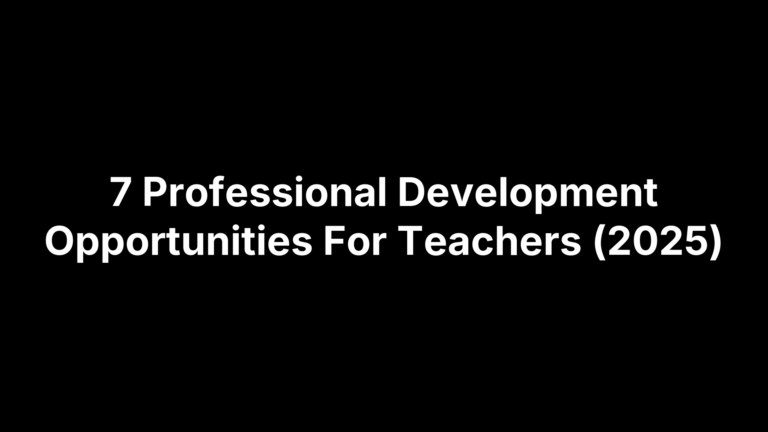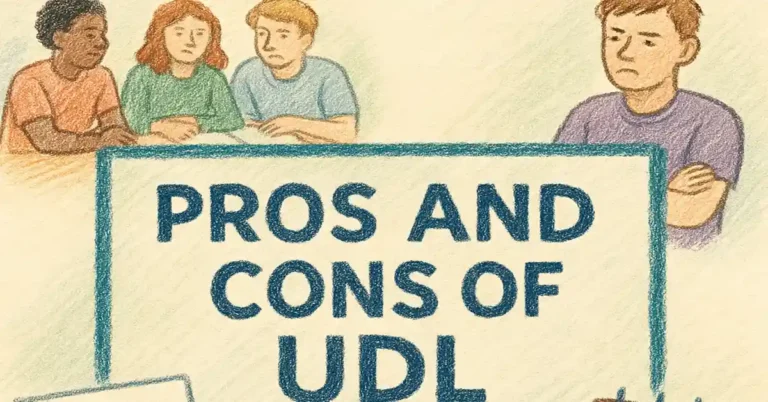Gamification: Definition, How It Works, Examples, Use Cases
Gamification means applying the most useful parts of game design—clear goals, fast feedback, visible progress, and meaningful rewards—to activities that aren’t games. It doesn’t turn your class, app, or workflow into a video game; it borrows proven mechanics like points, levels, challenges, streaks, narratives, and social features to make effort feel purposeful and progress easy to see. The result is higher motivation and better follow-through, whether you’re guiding students through a unit, onboarding new employees, or nudging customers to complete a journey.
This article is your concise guide to doing gamification well. You’ll learn how it works, which mechanics to choose, and the psychology that makes it effective—along with common pitfalls to avoid. We’ll compare gamification to game-based learning and serious games, walk through a practical design process, cover ethical and accessible choices, and show how to measure impact and ROI. Expect classroom-ready ideas, workplace use cases, marketing and health examples, AI-powered personalization tips, real-world case studies, tool recommendations, FAQs, and clear takeaways to help you get started with confidence.
How gamification works
At its core, gamification builds a tight feedback loop that makes the right behaviors feel purposeful and rewarding. When an action triggers immediate feedback, visible progress, and meaningful recognition, people tend to repeat it. The best designs support autonomy, competence, and relatedness—not pressure or trickery.
Define outcomes and target behaviors: Clarify the goal (e.g., finish onboarding modules, practice vocabulary daily) and the small actions that ladder up to it.
Map behaviors to mechanics: Choose elements like points, progress bars, streaks, levels, badges, leaderboards, quests, and social features, matching each to the context and audience.
Design the feedback loop: Create clear cues, bite-sized challenges, instant feedback, and progress indicators, with rewards that signal mastery. Think
cue → action → feedback/reward → progress.Align with intrinsic motivation: Make goals meaningful, offer choice, calibrate challenge to skill, and use collaboration or competition thoughtfully to foster belonging.
Integrate, don’t overwhelm: Weave mechanics seamlessly into the existing journey. Avoid “magic paint” overlays or turning the whole experience into a game.
Evaluate and iterate: Monitor engagement, completion, and quality; gather user feedback; and refine mechanics over time to sustain motivation and results.
Core mechanics and elements you can use
If learners can’t see progress, they quit; if progress is visible and meaningful, they persist. Gamification mechanics are the bite-sized cues, challenges, and rewards that make effort feel worthwhile. Start with progress and feedback, then layer recognition and social elements that fit your context. Choose only what directly supports the behaviors you want, and align each element with intrinsic drivers like autonomy, competence, and relatedness.
- Points/XP: Show activity volume and difficulty; weight higher-value behaviors more than easy clicks.
- Progress bars/checklists: Reduce ambiguity and boost completion with clear milestones and a “next best action.”
- Levels and streaks: Calibrate challenge over time; streaks encourage regular practice—add “grace days” to avoid burnout.
- Badges/achievements: Signal meaningful mastery with clear criteria; unlock privileges or content to keep them relevant.
- Leaderboards: Use cohorts, tiers, or personal bests to keep competition fair; consider team targets for inclusivity.
- Quests/missions/challenges: Bundle tasks into purposeful arcs; light narrative gives context and momentum.
- Immediate feedback: Instant hints, scores, and progress updates reinforce competence without overwhelming the experience.
- Social features: Teams, peer recognition, and sharing foster relatedness; mix cooperation and friendly competition.
- Meaningful rewards: Tie effort to outcomes that matter (e.g., real-world impact) rather than generic trinkets.
- Gentle loss aversion: Nudge with reminders or limited-time goals—avoid punitive penalties or manipulative tactics.
The psychology behind gamification
Great gamification feels motivating because it aligns with how people learn, decide, and stick with habits. Done well, it taps intrinsic motivation and provides just enough structure and feedback to sustain momentum—without manipulating users or drowning the task in “points for points’ sake.”
- Autonomy, competence, relatedness: Support choice, show mastery with instant feedback, and build community. These Self-Determination Theory needs are central to lasting engagement.
- Reinforcement loops: Tight
cue → action → feedbackcycles help behaviors stick. Immediate, informative feedback beats delayed, generic rewards. - Visible progress: Checklists, progress bars, and milestones make effort tangible and reduce ambiguity so users keep going.
- Challenge fit: Calibrate difficulty as skills grow. Right-sized challenges strengthen competence; overwhelming tasks erode it.
- Social motivation: Teams, peer recognition, and fair leaderboards foster belonging and light competition without alienating newcomers.
- Meaning over trinkets: Extrinsic rewards can spark action, but if goals and rewards aren’t meaningful—or don’t sustain competence, autonomy, and relatedness—they fade fast.
- Emotion and loss aversion (used gently): Friendly reminders, streak “grace days,” and time-bound missions can nudge action; avoid punitive penalties or pressure.
The takeaway: prioritize meaningful goals, clear feedback, and human needs—then let mechanics amplify them.
When to use gamification—and when not to
Gamification works best when you need consistent behaviors, frequent practice, and clear feedback. If the underlying task already delivers value (learning a skill, finishing onboarding, building healthy habits), mechanics can surface progress and make momentum feel inevitable. If you’re hoping to mask a broken experience or push people with pressure, it will backfire.
Use it when:
- Behaviors are specific and measurable: Checklists, streaks, or missions can reinforce daily or weekly actions.
- Feedback can be immediate: Points, hints, and progress bars clarify what to do next.
- Goals are meaningful: Rewards reinforce mastery, autonomy, and community, not just clicks.
- Fairness is feasible: Cohort leaderboards, tiered challenges, and accessibility are accounted for.
Avoid it when:
- The core experience is weak: “Magic paint” won’t fix poor content or clunky workflows.
- High-stakes or sensitive contexts: Grades, compliance penalties, or health risks don’t mix with competition.
- You can’t ensure equity: Public rankings that favor early adopters or privileged users demotivate others.
- Motivation is purely extrinsic: Trinkets without purpose fade quickly and can crowd out real learning.
Gamification vs. game-based learning (and serious games)
These terms often get blurred, but the design choices—and outcomes—differ. Gamification adds game elements to non-game tasks to boost engagement. Game-based learning uses an actual game as the vehicle for instruction. Serious games are full games built primarily for a non-entertainment purpose like education or training.
Gamification: Adds points, progress bars, badges, leaderboards, and missions to existing activities. Lives inside your current workflow or lesson. Example: LinkedIn’s profile completion bar; in class, Kahoot-style quizzes with points and rankings.
Game-based learning: Learners use a complete game to meet learning goals. The game itself delivers the content and practice. Example: Minecraft: Education Edition to teach coding or problem-solving.
Serious games: Purpose-built games for outcomes such as learning or behavior change. The entire experience is a designed game. Examples: educational titles like Math Blaster or Where in the World Is Carmen Sandiego.
Choose gamification to enhance a solid course or process, game-based learning when a game best teaches the content, and serious games when you need a dedicated, mission-driven game experience.
A practical design process to build gamified experiences
You don’t “add points and badges” at the end—you design a clear path from meaningful goals to repeatable behaviors, then layer only the mechanics that help. The process below blends player-centered research with tight feedback loops, seamless integration, and continuous iteration, reflecting best practices and common pitfalls highlighted by UX and gamification experts.
- Define the mission and outcomes: State the purpose and the few behaviors that matter (e.g., “complete 4 micro-lessons/week,” “submit a reflection after each module”).
- Know your players and context: Research needs, constraints, and motivations; create player personas; note environment and tone so mechanics fit the setting.
- Select minimal mechanics that fit goals: Map each behavior to 1–2 elements (progress bars, streaks with grace days, levels, team goals) that support autonomy, competence, and relatedness.
- Design the feedback loop: Build
cue → action → feedback → progressinto the journey with instant hints, visible milestones, and clear “next best action.” - Prototype and playtest: Use low-fidelity flows or clickable demos; test usability, motivation, and fairness; watch for “magic paint” symptoms or over-gamification.
- Integrate seamlessly: Weave mechanics into existing systems and workflows so the task—not the points—stays front and center.
- Measure and iterate: Track engagement, completion, time-to-skill, and quality signals; gather player feedback; tune challenges, rewards, and social features over time.
Example: For weekly vocabulary practice, bundle words into “quests,” show a progress bar for each set, add collaborative team milestones, and give immediate feedback on attempts—then refine based on completion rates and student input.
Ethical, inclusive, and accessible gamification
The ethics of gamification are simple: respect people. Designs that manipulate, overwhelm with “game paint,” or turn the task into a game for its own sake erode trust and results. Put human needs first—autonomy, competence, and relatedness—and make progress fair, transparent, and usable for everyone.
- Purpose over pressure: Avoid manipulation. Don’t trick users into behaviors; make goals meaningful and opt-in.
- Fairness and equity: Use cohort or tiered leaderboards, team goals, and personal bests. Account for time zones, devices, bandwidth, and starting skill.
- Transparent rules: Publish criteria for points, badges, levels, and consequences. No hidden thresholds or surprise penalties.
- Protect privacy: Collect the minimum data, limit public stats by default, and let users control visibility.
- Accessibility by design: Ensure mechanics work without vision, hearing, or fine-motor precision. Provide text alternatives, avoid color-only signals, support keyboard navigation, and offer captions/transcripts.
- Psychological safety: Replace public shaming with private feedback. Use gentle nudges and streak “grace days,” not punitive loss.
- Meaningful rewards: Recognize mastery with privileges, feedback, or unlocked content—avoid trinkets that crowd out intrinsic motivation.
- Cultural and identity inclusion: Use inclusive language, customizable avatars, and scenarios that reflect diverse learners.
- Control the noise: Let users mute reminders, adjust difficulty, and choose collaborative vs. competitive modes.
Design with dignity, clarity, and choice—and the mechanics will amplify, not replace, genuine motivation.
How to measure success and ROI
Measure what you intend to change. Start by defining the small target behaviors your gamification must increase, set a baseline, and instrument the journey so every cue, action, and feedback event is trackable. Favor outcome-linked metrics over vanity stats, and plan from the start to evaluate and iterate.
Tie engagement to real results. Use leading indicators (participation and progress) to predict movement in lagging indicators (learning, performance, revenue, retention). Add guardrails (quality, equity, and satisfaction) so gains don’t come at the expense of experience or fairness. Isolate impact with A/B tests, pilots, or cohort comparisons.
- Leading indicators: activation rate, weekly active participants, quest starts/finishes, streak adherence, time on task, next-step click-through.
- Outcomes: completion and mastery rates, time-to-competence, error reduction, on-time submissions, retention/recidivism changes, transfer to real tasks.
- Quality and equity: CSAT/NPS, help requests, drop-off points, participation by subgroup/cohort, sentiment.
- Efficiency and cost: hours saved (learners, teachers, managers), fewer tickets/clarifications, content reuse. Monetize time saved with loaded hourly rates.
- Business value (when relevant): conversion rate, upsell/cross-sell, revenue per user, LTV, churn, attendance.
Calculate ROI with a simple model:
ROI = (Incremental value - Program cost) / Program cost
- Incremental value = monetized outcomes (e.g., time saved + revenue lift) minus any cannibalization.
- Program cost = platform + incentives + build/ops + change management.
Quick plan: baseline → set targets → instrument events → run a pilot/control → review results and player feedback → iterate mechanics and relaunch at scale.
Gamification in education: classroom ideas, tools, and tips for teachers
Teachers don’t need a full video game to spark focus. Thoughtful gamification makes practice visible, feedback immediate, and progress inevitable—without overshadowing content. Start small, tie mechanics to standards, and keep it fair, inclusive, and low‑stakes.
Quick classroom ideas
Pick one unit and make momentum easy to see. These lightweight patterns fit a 10–50 minute block.
- Unit quests: Bundle tasks into missions with visible milestones and checklists.
- Streaks with grace days: Reward consistency without overly punishing absences.
- Mastery badges: Clear criteria unlock privileges or optional challenge paths.
- Progress bars and “next step” prompts: Reduce ambiguity and drive finishes.
Tools to try
Use familiar tools; you don’t need a new platform. Start where students already are.
- Kahoot: Live, low‑stakes quizzes with instant feedback and friendly leaderboards.
- Minecraft: Education Edition: Game-based projects for coding and problem‑solving.
Practical tips that prevent pitfalls
Protect learning while you boost engagement. These guardrails keep motivation healthy.
- Start with standards and behaviors: Map each target to one helpful mechanic.
- Separate points from grades: Keep competition optional and cohort‑based.
- Design for access: Captions, keyboard paths, and color‑independent signals.
- Be transparent: Publish criteria and privacy defaults; collect minimal data and invite feedback.
Gamification in the workplace: onboarding, learning, and performance
Thoughtful gamification helps employees see what good looks like, take the next best step, and feel progress early and often. In practice, that means clear missions, instant feedback, and visible milestones embedded in everyday tools. Enterprise programs often report significant lifts—such as higher training utilization, dramatic boosts in community engagement, and revenue gains among highly engaged cohorts—when missions and feedback loops are aligned to real work.
Onboarding
New hires need clarity and momentum. A guided path reduces confusion and speeds time-to-productivity.
- “First 30 days” mission map: Role-based checklists with a progress bar and “next step” prompts.
- Milestone badges that unlock access: Completion of security, tools, and shadowing unlocks systems or advanced content.
- Buddy quests: Pair newcomers with a mentor for short, social challenges (meet 5 stakeholders, ship a micro-task).
- Measure: Module completion, time-to-first-task, help tickets per new hire.
- Guardrails: Keep progress private by default; avoid public leaderboards during onboarding.
Learning and development
Make practice habitual and mastery visible without turning learning into a points chase.
- Microlearning streaks (with grace days): Encourage frequent, low-friction practice without punishing absences.
- Skill levels tied to assessments: Levels reflect demonstrated competence, not seat time.
- Immediate feedback: Hints, retries, and mastery tracking after each check.
- Social recognition: Peers and managers spotlight meaningful completions or applied skills.
- Measure: Weekly active learners, mastery rates, time-to-competence, on-the-job transfer.
- Guardrails: Separate points from performance reviews; prioritize accessibility and choice.
Performance and productivity
Target a few high-value behaviors and reward balanced outcomes, not raw volume.
- Sales/service missions: Log discovery calls, advance qualified opportunities, resolve tickets with quality—weighted by impact.
- Cohort leaderboards and team goals: Fair comparisons, season resets, and emphasis on “personal bests.”
- Tiered challenges: Beginner to expert paths that calibrate difficulty and keep progress attainable.
- Balanced scorecards: Pair activity with results and quality (win rate, CSAT, error reduction).
- Measure: Leading indicators (pipeline hygiene, resolution time) alongside outcomes (revenue, CSAT, retention).
- Guardrails: Prevent metric gaming, protect privacy, and recognize context (territory, case complexity).
Done this way, workplace gamification boosts adoption, speeds learning, and nudges consistent performance—while keeping autonomy, competence, and fairness at the center.
Marketing and customer loyalty use cases
Great marketing gamification doesn’t dangle gimmicks—it guides customers through a journey where every step feels rewarding and purposeful. Think of Foursquare’s classic check-ins with points, badges, and “mayor” status, or airline-style tiers that recognize loyalty over time. When mechanics align with value (education, participation, referrals), brands see durable lifts: enterprise programs have reported big gains like higher product-education utilization, revenue upticks among highly engaged cohorts, and dramatic increases in community participation.
Where it fits in the customer journey
- Acquisition quizzes and mini‑games: Low-friction experiences that teach and qualify while capturing consented leads. Advergames and “play-to-learn” interactives often report higher engagement than static ads.
- Activation progress bars and checklists: Like LinkedIn’s profile completion meter, make onboarding obvious and celebratory with milestones and instant feedback.
- Loyalty tiers, streaks, and missions: Reward frequency and breadth (not just spend). Add “grace days” to keep streaks humane. Tie badges to meaningful perks.
- Community status and recognition: Badges, levels, and peer shoutouts (à la Reddit) turn forums or groups into vibrant, self-sustaining spaces.
- Referral and UGC challenges: Time‑boxed missions that spotlight creators, unlock perks, and build social proof.
- Transmedia, brandification, and advergames: Extend IP across channels, place brands inside games, or build a simple branded game to deepen recall.
Guardrails: avoid “magic paint,” set transparent rules, weight high‑value behaviors (not clicks), keep comparisons fair (cohorts, season resets), and limit public stats by default. The goal is loyalty rooted in meaning, not manipulation.
Health and well-being use cases
Health and well‑being gamification turns tiny habits into visible wins. Running apps like Nike Run Club use points, badges, and leaderboards to reinforce activity; Headspace structures meditation into clear levels; Zombies, Run! wraps workouts in narrative; Forest grows a tree while you focus—and can fund real trees; Les Mills group rides add leaderboards and gentle “don’t miss class” nudges. The thread is the same: meaningful goals, instant feedback, and fair social support that build consistency without pressure.
- Consistency over intensity: Short daily targets and streaks—with grace days to prevent burnout.
- Make rewards matter: Unlocks, community recognition, and real‑world impact (e.g., planting trees).
- Keep competition fair: Cohorts/teams, personal bests, and regular season resets.
- Protect people: Opt‑in reminders, private progress by default, and minimal data collection.
AI-powered gamification and personalization
AI makes gamification feel tailored instead of tacked on. By learning from behavior patterns, it can adjust challenge, recommend the next best action, time nudges for when they’ll help (not annoy), and generate targeted feedback. Done right, this increases engagement and mastery without adding cognitive load. Many platforms now include AI-driven mission recommendations, and combining gamification with AI is a proven way to encourage desired behaviors and improve user experiences.
What AI unlocks
Start with a solid design, then let AI fine‑tune the fit.
- Adaptive difficulty and sequencing: Calibrate item difficulty and content order to each learner’s pace and skill.
- Next‑best‑action missions: Recommend the most impactful task based on recent behavior and goals.
- Smart, fatigue‑aware nudges: Send reminders at the right moment/channel; pause when signals suggest overload.
- Real‑time coaching: Conversational helpers give hints, explanations, and encouragement tied to performance.
- Content assistance: Draft quiz items, scenarios, or badge criteria for human review—speed up iteration, keep quality.
- Fair play and integrity: Detect gaming patterns, enable cohort leaderboards, and auto‑handicap to keep competition equitable.
- Churn prediction and rescue: Flag drop‑off risk early and launch supportive re‑engagement missions.
How to implement responsibly
Put people first and make the system legible.
- Data minimization and consent: Collect only what you need; be transparent about use and retention.
- Explainability and control: Show why something was recommended; offer an easy “show me alternatives” option.
- Bias and fairness checks: Monitor outcomes across cohorts; tune models to avoid disadvantaging any group.
- Human oversight: Keep teachers/managers in the loop to approve content and override AI suggestions.
- Guardrails for motivation: Favor mastery signals over raw clicks; cap nudges; support “grace days.”
- Test and iterate: A/B test recommendations; track mastery, satisfaction, and equity—not just activity.
A simple rule-of-thumb policy:
if mastery < 80% then recommend remediation mission; else suggest stretch challenge; nudge only if no activity in 48h and user opted in.
Real-world examples you already know
You’ve probably felt gamification without naming it—nudging you to take the next step, practice one more day, or check in with friends. These familiar products show how clear goals, instant feedback, visible progress, and social cues turn routines into momentum.
- Duolingo: XP, levels, and streaks guide daily practice, adapting lessons to pace and keeping goals front‑and‑center.
- LinkedIn: The profile completion bar and milestone prompts make onboarding tangible and encourage “just one more” step.
- Foursquare (Swarm): Check‑ins earn points, badges, and even “mayor” status—simple mechanics that made exploration social.
- Reddit: Badges, points, coins, avatars, and recognition convert posting and voting into community status and sustained participation.
- Nike Run Club (Nike+ Run): Run tracking, badges, and leaderboards visualize effort and spark friendly competition around consistent activity.
- Headspace: Short sessions organized into levels use progress and gentle structure to support mastery before advancing.
- Forest: A tree grows while you focus; leave early and it withers—progress you can see, plus the option to plant real trees.
- Zombies, Run!: Storytelling wraps workouts in missions, turning distance into narrative progress and recurring goals.
- Kahoot: Live, low‑stakes classroom quizzes with points and leaderboards add immediacy and feedback to formative checks.
Across categories, the pattern is consistent: meaningful goals, immediate feedback, visible progress, and fair social mechanics that make the next best action obvious—and worth taking.
Tools and platforms to get started
Pick the smallest tool that fits your journey. Start where your learners or customers already are, add only the gamification mechanics you need, and prefer platforms that integrate cleanly so feedback and progress feel native—not bolted on.
- Classroom-ready starters: Kahoot for live, low‑stakes quizzes with instant feedback; Minecraft: Education Edition when a full game experience best delivers the lesson.
- Enterprise engagement suites: Bunchball Nitro, Impact, and Impact+ offer secure, scalable gamification with embeddable mission blocks, AI-driven recommendations, SSO, accessibility, and localization—useful when you need to engage users inside existing portals or apps.
- DIY on your website or store: Popular site builders like Wix and Shopify can host simple games on eCommerce pages to drive engagement and email capture. If you’re rolling your own flows, study patterns like progress bars and milestone checklists—DevHub famously reported moving task completion from 10% to 80% after adding gamification elements.
When choosing, prioritize:
- Integration and admin UX: SSO, APIs, and easy mission setup.
- Analytics that tie to outcomes: Events, cohorts, and A/B testing.
- Accessibility and privacy: Keyboard/caption support, minimal data by default.
- Fair play features: Cohort leaderboards, season resets, and anti‑gaming controls.
Start small, measure, and iterate—let the tool serve the behavior, not the other way around.
Frequently asked questions
This quick FAQ gives straightforward answers you can act on right away. If you’re new to gamification, start simple, keep the learning goal front-and-center, and use data and feedback to refine. If you’re experienced, treat these as guardrails to avoid common pitfalls.
What is gamification?
Applying selected game elements—clear goals, instant feedback, progress, and meaningful rewards—to non-game tasks to increase motivation and completion.How is it different from game-based learning or serious games?
Gamification enhances existing activities with mechanics; game-based learning uses a full game to teach; serious games are complete games built for a non-entertainment purpose.Do I need points and leaderboards?
No. Pick only mechanics that serve your goal—often progress bars, checklists, timely feedback, and small missions outperform public rankings.Can gamification backfire?
Yes, if it’s “magic paint,” manipulative, or over-reliant on extrinsic rewards. Focus on meaningful goals and support autonomy, competence, and relatedness; protect privacy and accessibility.How do I start and measure success?
Define target behaviors, add minimal mechanics, pilot with a cohort, then track leading indicators (participation, progress) and outcomes (mastery, performance). Iterate based on data and user feedback.
Key takeaways
Effective gamification makes the next step obvious, meaningful, and rewarding. Start with clear outcomes and target behaviors, pick the smallest set of mechanics that support autonomy, competence, and relatedness, then integrate them seamlessly into the journey. Measure what matters, protect privacy and fairness, and iterate. When the core experience is sound, gamification amplifies learning and performance.
- Start with outcomes: Define a few specific behaviors to reinforce.
- Keep mechanics minimal: Progress bars, checklists, streaks (with grace days), and mastery badges go far.
- Tight feedback loop:
cue → action → feedback → progressdrives momentum. - Meaning over gimmicks: Prioritize purpose, equity, accessibility, and privacy.
- Measure and refine: Track leading indicators and outcomes; pilot, A/B test, and tune.
- Apply thoughtfully: Classroom, workplace, loyalty, and health each need a tailored fit.
- Use AI carefully: Adaptive missions and smart nudges—transparent, consented, and bias-checked.
For classroom-ready strategies and time-saving tools, explore The Cautiously Optimistic Teacher at teachers-blog.com.
